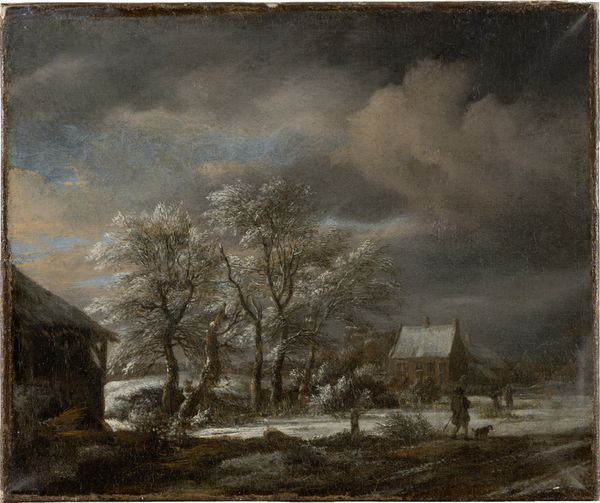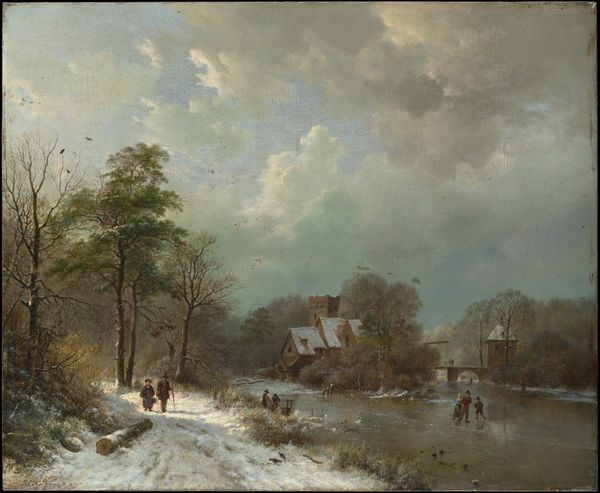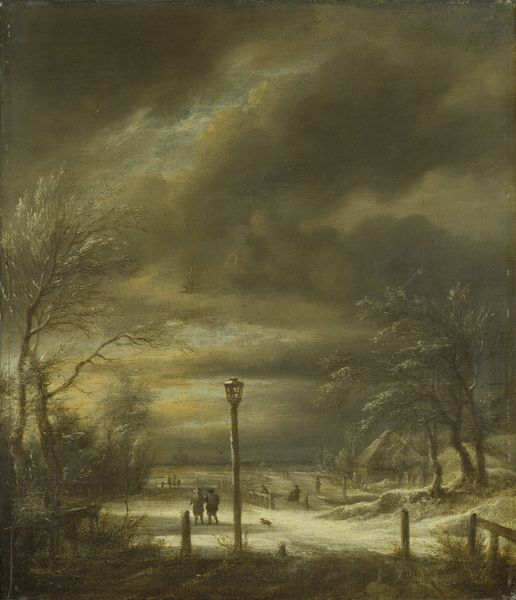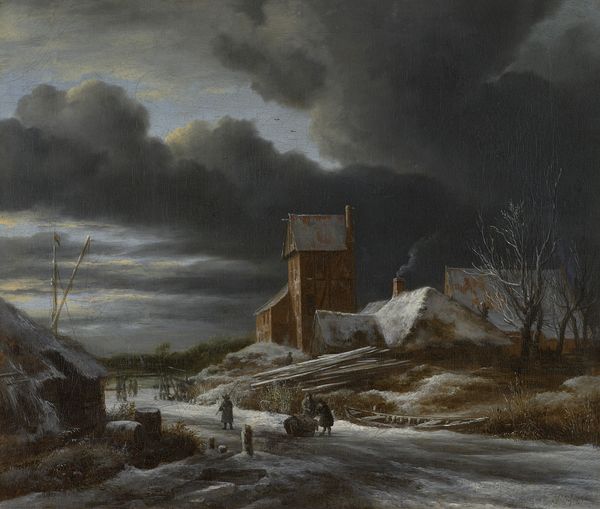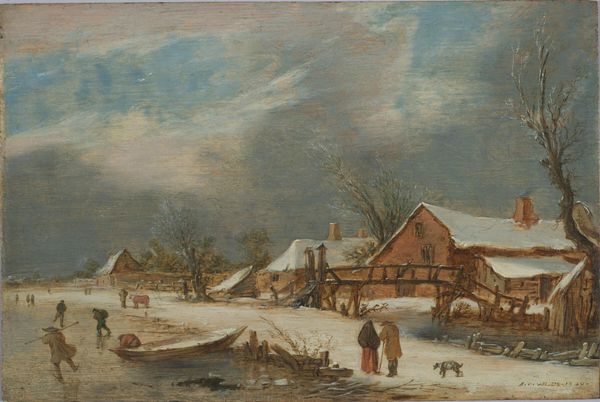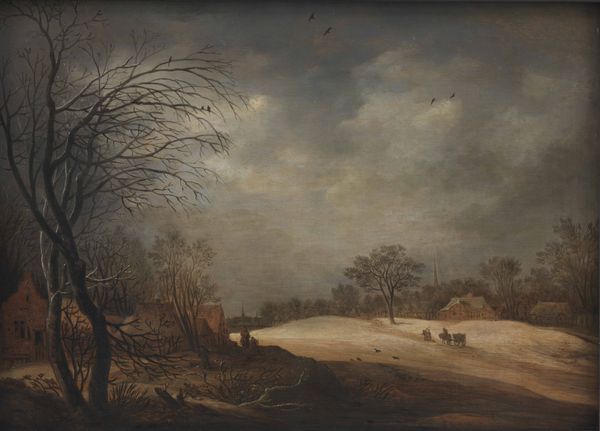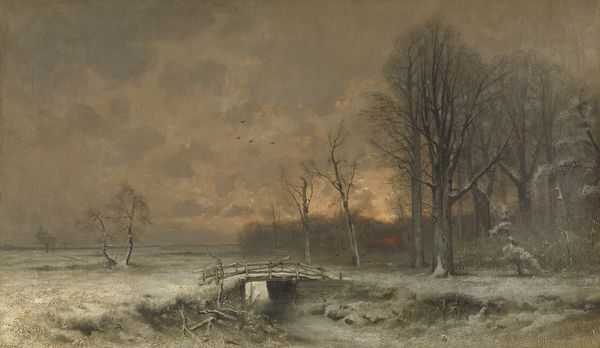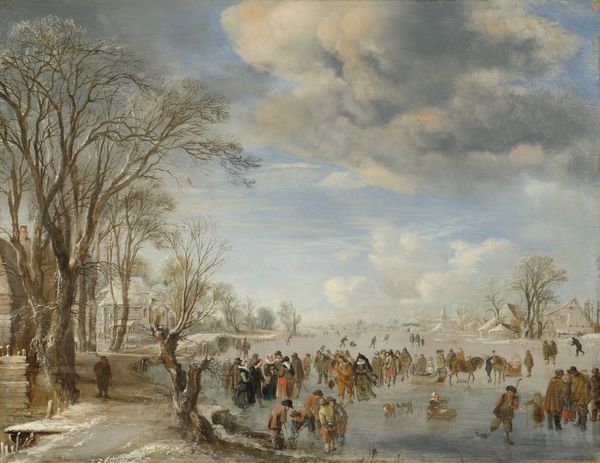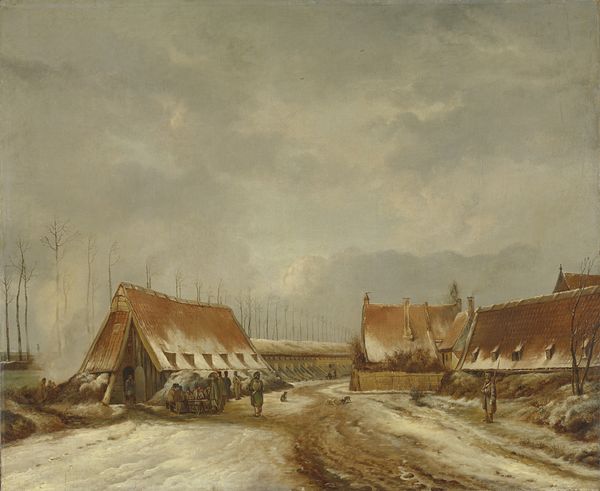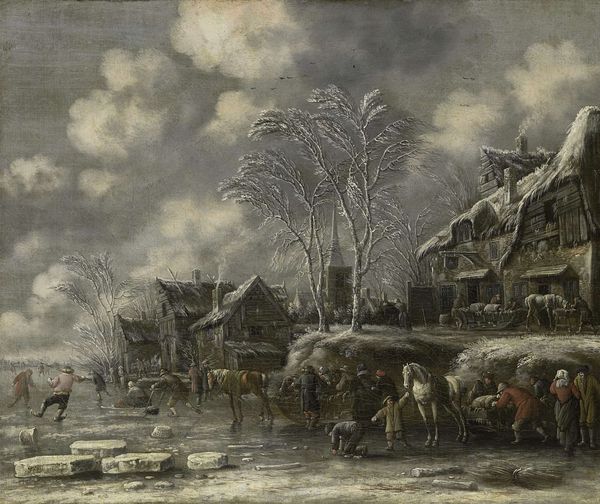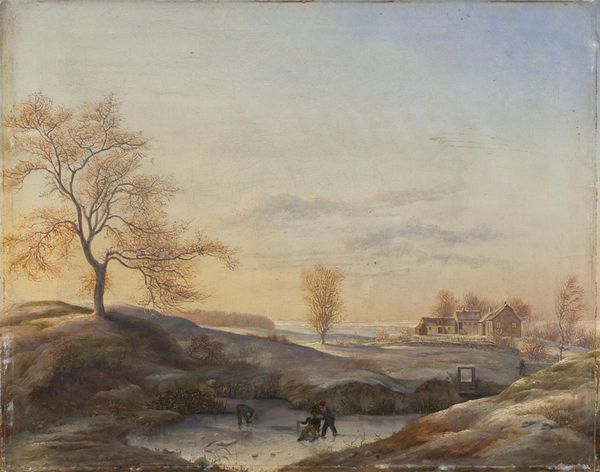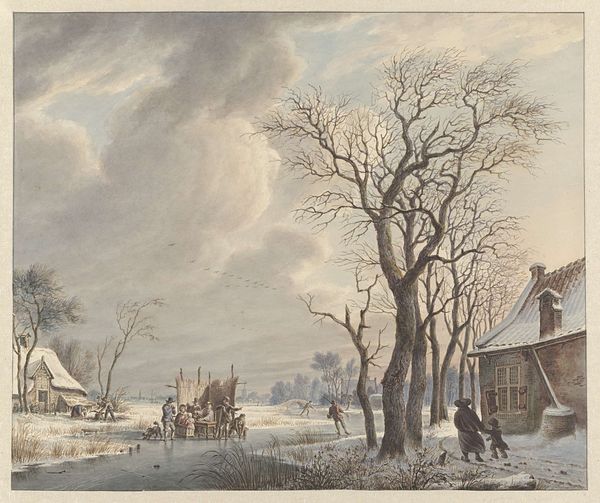
painting, oil-paint
#
dutch-golden-age
#
painting
#
oil-paint
#
landscape
#
oil painting
#
cityscape
#
genre-painting
#
realism
Dimensions: height 51.5 cm, width 67.4 cm, depth 7 cm
Copyright: Rijks Museum: Open Domain
Curator: Upon first viewing, what captures your attention about Jan van de Cappelle's "Winter Scene," believed to be created between 1652 and 1653 using oil paints? Editor: The overall impression is almost monochrome. A palette of greys and browns, it certainly conveys a sense of a biting, cold winter’s day. The light, although subdued, directs the eye horizontally across the frozen expanse, drawing me into the heart of this frigid landscape. Curator: Cappelle's representation speaks volumes about 17th-century Dutch society. Winter scenes like this were immensely popular, reflecting the realities of daily life while subtly nodding to Dutch resilience and community in the face of harsh conditions. The frozen waterways, far from being barriers, become spaces for connection, trade, and recreation, revealing a society adapting and thriving despite the winter's challenges. Editor: Indeed. The composition itself guides the viewer through the scene. From the foreground with the boat and figures preparing to skate, to the central frozen river with people actively engaged in skating, to the background, one can observe detailed brushstrokes that defines houses with thatched roofs. Semiotically, these signs lead me through this space as though I was navigating it myself. Curator: The figures present various forms of labor and leisure across the frozen landscape, challenging the prevailing historical narratives centered on elite male experience. Can we view "Winter Scene" as representing everyday life with all its socio-economic nuances? Editor: The artist balances various visual elements of open space and solid forms. While it avoids precise geometries or sharp, hard-edged forms and outlines, I would note it gives this composition its open and natural character, true to landscape. Curator: Understanding van de Cappelle’s painting as an intersectional view offers insight into a society’s daily lives but also allows an analysis through the visual and the sensorial. These convergences challenge entrenched hierarchies. Editor: True, that artistic structure works whether a genre painting depicts figures engaged in work or play or at rest, each with varied dress and activity; such a confluence emphasizes the intrinsic value of a unified composition, its elements interwoven as components of a visually accessible reality.
Comments
No comments
Be the first to comment and join the conversation on the ultimate creative platform.
